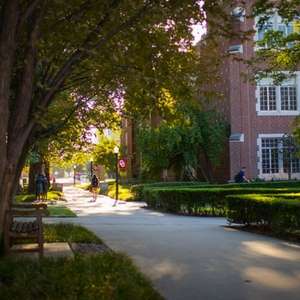NORMAN—A University of Oklahoma meteorology team, led by Steven Cavallo, is studying the role of tropopause polar vortices as a barrier in limiting predictability over the Arctic with three, five-year grants totaling $2.9 million from the U.S. Department of Defense, Office of Naval Research. TPVs occur in the upper troposphere of the Arctic, but the data doesn’t exist from this barren region to improve prediction. The OU team plans to conduct aircraft data-collection experiments during an international field campaign associated with the ‘Year of Polar Prediction.’
“We believe TPVs are a precursor to weather events that happen here, but we don’t know what features are missing in our models to improve prediction,” said Cavallo, professor and chair of graduate studies, School of Meteorology, OU College of Atmospheric and Geographic Sciences. “Without new data from the Arctic, we can’t predict TPVs beyond a two-week period.”
Cavallo is collaborating on this study with David Parsons, meteorology professor and school director, who is investigating the impact of ocean waves on TPVs and Arctic cyclones and whether warm, moist air injected into the Arctic influences the structure and intensity of TPVs and cyclones; and Xuguang Wang, meteorology professor, who is developing an optimal numerical weather prediction system to understand the Arctic features (Arctic cyclones and polar lows) limiting predictability.
“TPVs are meso-scale (smaller) vortices about 5 miles up in the troposphere that are long-lived in the Arctic,” said Cavallo. “We plan to conduct an aircraft campaign using weather instruments known as dropsondes to collect heat and moisture data that we believe contribute to the evolution of TPVs. Another area of research focuses on sea ice, which is limited or thin in some areas of the Arctic. The OU team will use measurement strategies to determine whether heat is coming up from the lower latitudes or from the surface to cause the thinning of sea ice.”
The Arctic is the one area that has not been researched as much, but a greater understanding of the processes affecting TPVs will lead to improvements in weather and climate prediction through a representation of processes in numerical models. For more information about this project, please contact cavallo@ou.edu.



